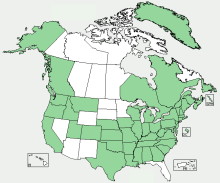Purple Deadnettle
Botanical name: Lamium purpureum
Family: Mint/Deadnettle (Labiatae)
Collectability: plentiful, common, weed
Use - overview






Features and Identification
Habitat
Type: waste places, cultivated areas
Distribution: throughout northern hemisphere
General
Growth type: herb
Cycle: annual
Height: up to 30cm
 Leaf
Leaf
Shape: heart
Texture: downy
Arrangement: pairs
Edge: finely toothed
Other: top leaves purple
 Flower
Flower
Shape: lipped
Arrangement: in whorls
When: March to October
Colour:
Type: waste places, cultivated areas
Distribution: throughout northern hemisphere
General
Growth type: herb
Cycle: annual
Height: up to 30cm
 Leaf
LeafShape: heart
Texture: downy
Arrangement: pairs
Edge: finely toothed
Other: top leaves purple
 Flower
FlowerShape: lipped
Arrangement: in whorls
When: March to October
Colour:

Distribution Map

When Available?

 all year
all yearCulinary Use
How to Consume

 raw
raw
Used as ...

 food
food

 raw
rawUsed as ...

 food
food
Medicinal Use
Action:
Whole plant: astringent, diaphoretic, diuretic, purgative
May treat:
Whole plant: decoction: checking any kind of haemorrhage
 Poultice: wounds
Poultice: wounds
Whole plant: astringent, diaphoretic, diuretic, purgative
May treat:
Whole plant: decoction: checking any kind of haemorrhage
 Poultice: wounds
Poultice: wounds
Collection, Storing, Notes
Collection
 best in spring and during flowering when biggest
best in spring and during flowering when biggest
 best in spring and during flowering when biggest
best in spring and during flowering when biggest
Key
Plant parts:
 leaf
leaf
 stem or trunk
stem or trunk
 sap
sap
 root, bulb, tuber and other below ground parts
root, bulb, tuber and other below ground parts
 flower
flower
 fruit
fruit
 seed
seed
Use:
 culinary use
culinary use
 medicinal use
medicinal use
 household use
household use
Other:
 caution
caution
 leaf
leaf stem or trunk
stem or trunk sap
sap root, bulb, tuber and other below ground parts
root, bulb, tuber and other below ground parts flower
flower fruit
fruit seed
seedUse:
 culinary use
culinary use medicinal use
medicinal use household use
household useOther:
 caution
caution
Glossary
Glossary of Medicinal Terms and Nutritive Substances
- astringent: causes localised contraction of blood vessels and tissue, reducing the flow of blood, mucus, diarrhoea etc.
- diaphoretic: promotes perspiration, aids the skin in elimination of toxins
- diuretic: increases secretion and elimination of urine
- purgative: produces evacuation of the bowels (more severe than aperients or laxatives)




